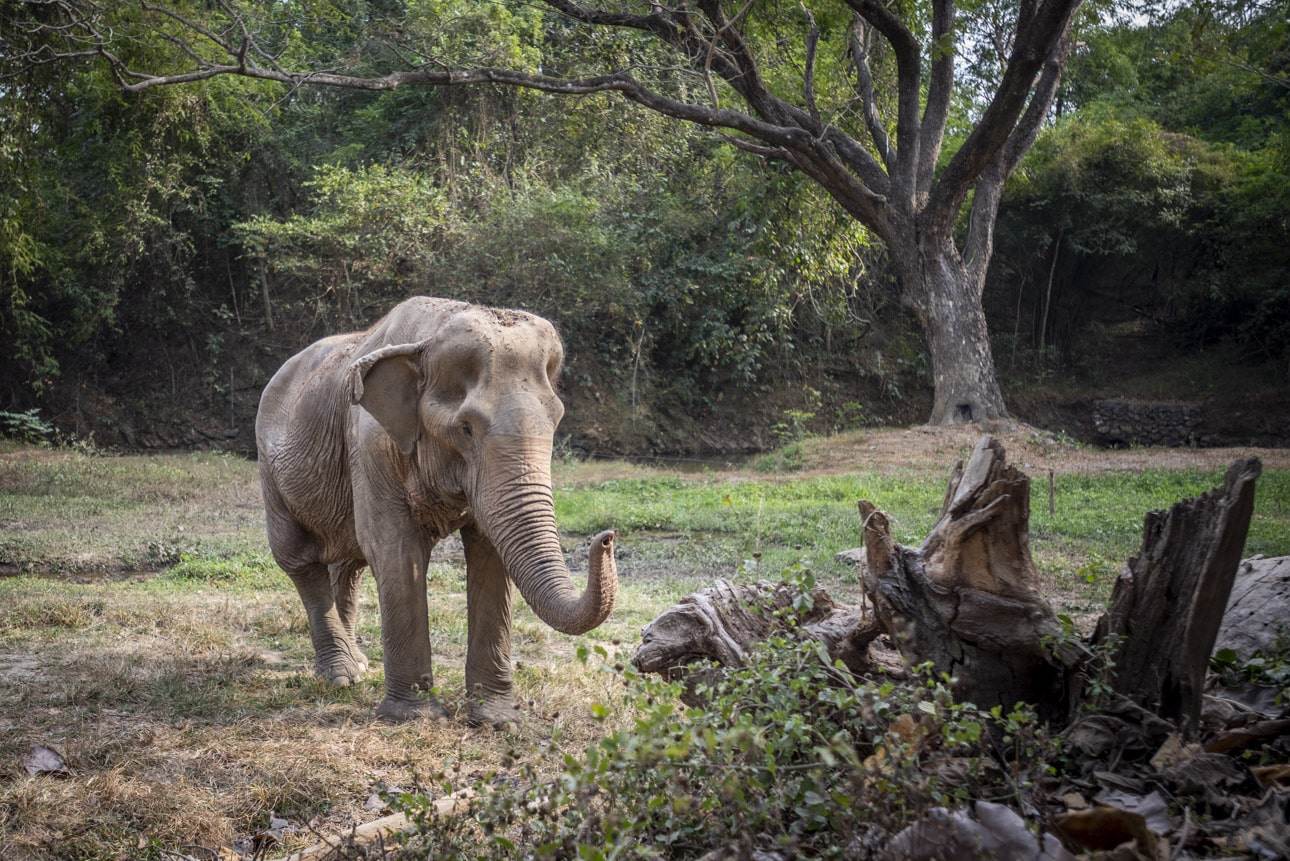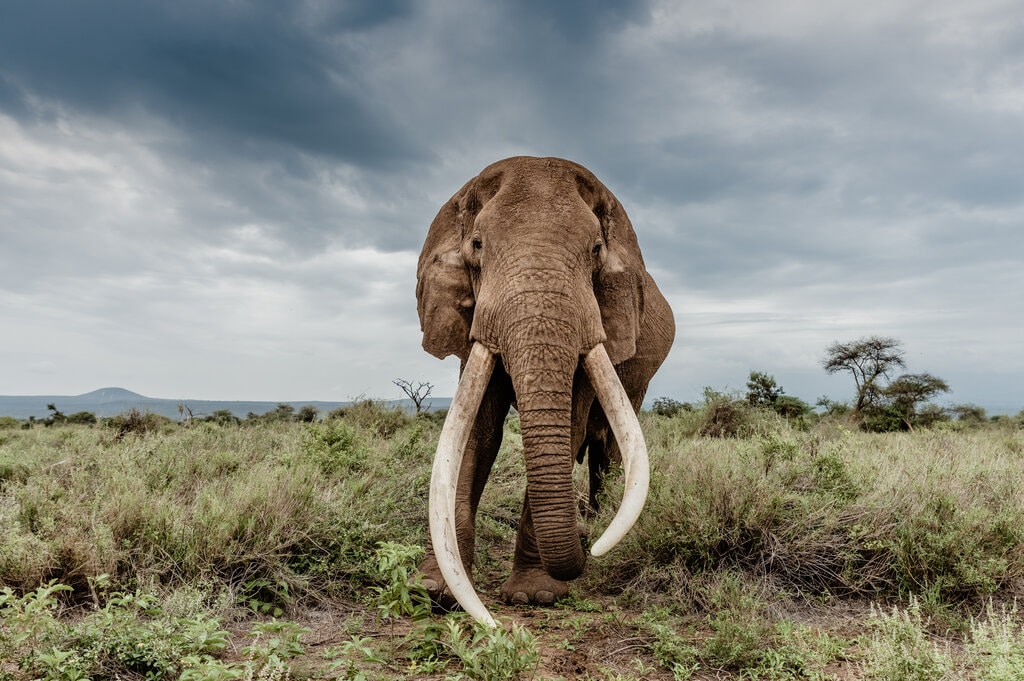Elephants play a vital role in their ecosystems and contribute to tourism and community incomes in many areas. Unfortunately, with only 40,000-50,000 left in the wild, this species is classified as endangered. To celebrate World Elephant Day 2023, an international day dedicated to the preservation and protection of this wonderful animal, here are 12 facts about elephants you might not know about.
—
12 Facts About Elephants You Might Not Know About
1. Elephants are the World’s Largest Land Animal
As the largest land mammal on the planet, an average male elephant can be measured up to three meters high (or 13 feet) and weighing up to six tonnes. Elephants also have large brains – they weigh about 4-6kg and are the largest for terrestrial mammals. Those that live in the wild can grow to be 60-70 years old.
2. African Elephants and Asian Elephants are the Two Main Species
Aside from their geographical locations, African Elephants are distinctly larger in size with bigger ears shaped like the African continent. Asian elephants, on the other hand, are smaller sized with more rounded ears. The two species also have varying trunks, where African elephants have identifiable two spikes at the tip of their trunks whereas Asian elephants have just the one.
Recent estimates suggest there are approximately 415,428 African elephants remaining, half of which are located in southern Africa including Botswana and Namibia, whilst the Asian variety has fallen to an low estimated figure of below 30,000.
3. Asian Elephants are An Endangered Species
The Asian elephant is currently listed as an endangered species on the International Union for Conservation of Nature (IUCN) Red List, and its population continues to drop with every day. Some estimates have put the 50% population loss within the last 75 years and possibly as low as 20,000 Asian elephants are left in the wild.
They can be found in forested regions of India and throughout Southeast Asia, including Myanmar, Thailand, Cambodia, and Laos, with about a third of Asian elephants currently living in captivity, many of which are forced into wildlife tourism.
4. Elephants Communicate with Vibrations Through Their Feet
Here’s one of the more interesting facts about elephants: they can communicate with their feet. There are many ways in which elephants can communicate. They can trumpet call each other – usually when greeting family members, use body language, and typical senses such as touching and scenting. However, one of the most unique communication methods elephants use is through seismic signals, where they create vibrations in the ground, allowing other elephants to detect and absorb them through their feet and bones. The communication channel can work at incredibly vast distances and alarming speed.

Photo: Jürgen Büche.
5. Elephant Family Units are Matriarchal
Mother as they say knows best and it’s more than accurate in the case for elephant family and social units. The matriarch of an elephant unit is typically the oldest and largest adult female member of the family, and they are the ones to lead the herd in travelling long distances for food and water. The matriarch is also responsible for providing stability and conflict resolutions. However, members of a family unit have also often displayed extraordinary teamwork when it comes to group defense, food hunting, and sharing the responsibilities of caring for a young calf.
6. Elephant Trunks Function As Their Hands
An elephant’s trunk is more than just a nose – smelling and breathing, but they also function very much like a long arm to grab food and items, dig through soil and tree trunks, as well as even play. Elephants also rely on their trunks to consume water and pour up to 12 litres of water into their mouths. They enjoy a refreshing shower by sucking up water and spraying back over their bodies with the handy trunks. There’s around 100,000 different muscles in the trunk alone, with the “finger” or spikes located at the end to help pick up small objects.
You might also like: Rhino, Elephant Poaching Continues to Decline in Africa
7. Elephants Tusks Are Actually Their Teeth
Elephant tusks are actually enlarged incisor teeth which first appear when elephants are around 2 years old. In fact, their tusks are used for digging for food and water, as well as a powerful tool to strip bark off of trees. For males, tusks are particularly important – and larger, too – for they used to battle over dominance.
8. Elephants are Vegetarians
Despite being the largest land mammal on the planet, Elephants’ entire diet consists of roots, grasses, fruits, and bark. However, it’s the sheer volume of them that helps the animal get to their size. An adult elephant can consume up to 300 pounds of food in a single day.
9. Elephants Have Incredible Thick Skin
No, it doesn’t mean elephants don’t get upset easily, but rather the animal physically has thick hides that protects them from the brutal heat and sun. The skin is also extremely dry where the numerous folds and wrinkles can collect and store moisture when elephants bathe in water and mud.
10. Elephants are Highly Intelligent Creatures
The animal is regarded as one of the world’s most intelligent animals, much like great apes and dolphins. They have demonstrated the ability to make and use tools – which their trunks, of course, experience complex emotions such as compassion and grief, and recently, shown evidence to have self-awareness when shown in front of a mirror.
11. Elephant Poaching for Ivory Have Destroyed 90% of Elephant Population in the Past Century
One of most unfortunate facts about elephants is their relationship with the ivory trade. Ivory, which is found in elephant trunks, has been an incredibly lucrative industry. Dating back to hundreds of years ago, ivory is often seen as a status symbol. Due to the massive illegal elephant poaching in the 1970s and 1980s for ivory, around 90% of African elephants have been wiped out in the past century. Although many countries have now banned the trade, more than 20,000 elephants are still killed every year to satisfy demand for ivory in Asia, particularly in China and Japan.

Photo: EO Photographer Amy Jones.
12. Human and Elephant Conflicts Have Been On the Rise
Due to growing human population density and farming expansion, particularly in countries in Africa, the growing shared land between humans and wildlife, have fuelled conflicts. From crop-raiding elephants in local farms, which for many are the sole source of income to degradation to their natural habitats due to land development, conservation of the species and their ecosystem is greatly needed.
Featured image by EO Photographer: William Fortescue
You might also like: All You Need to Know About the Endangered Asian Elephant


















